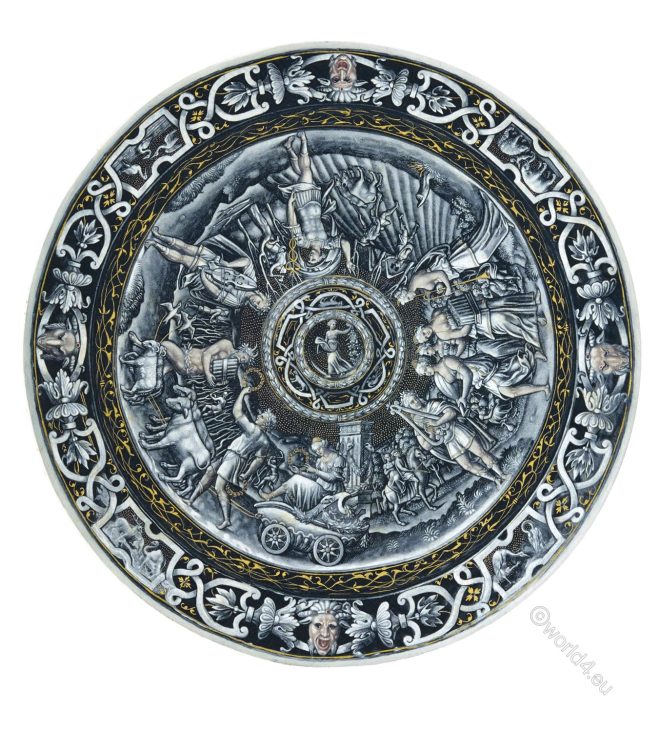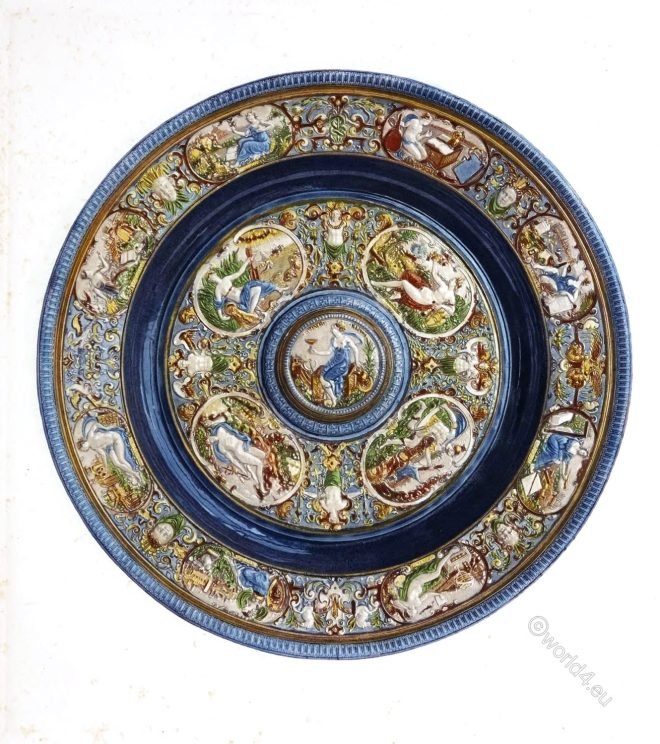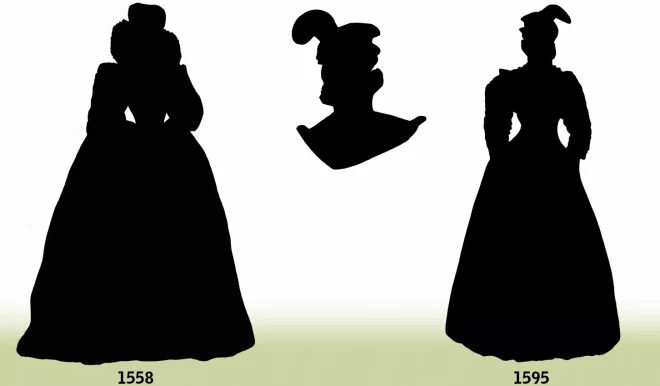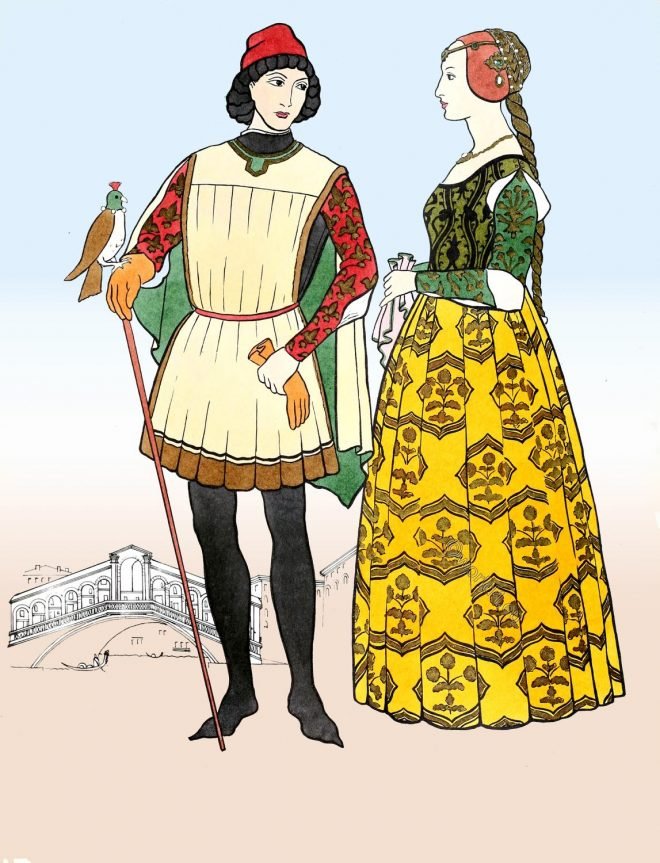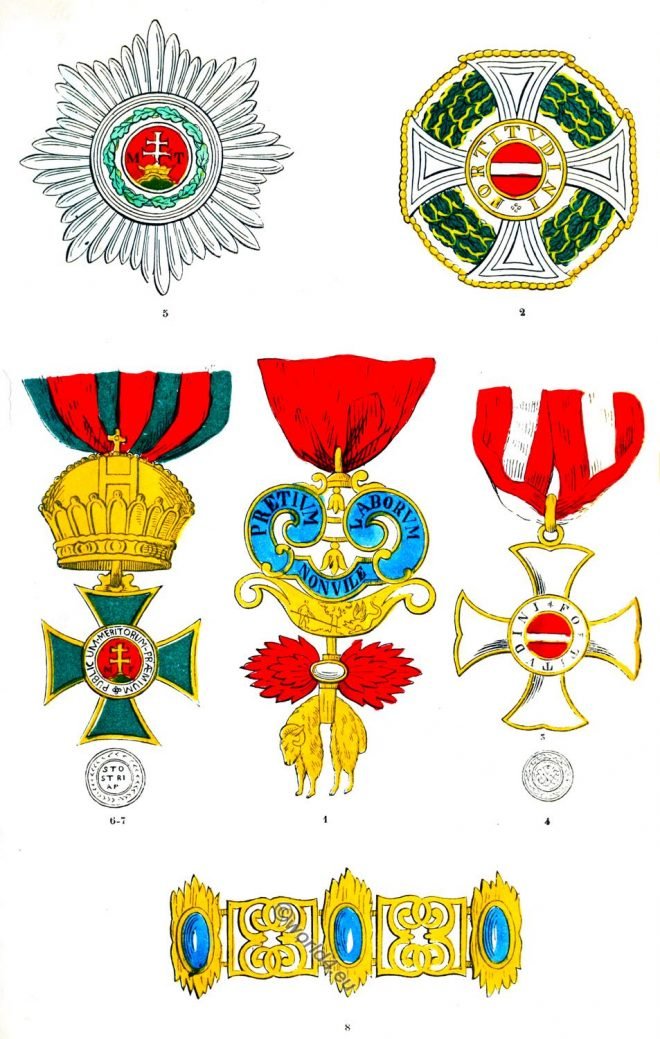Enamel dish. Allegory of Spring. Youths and maidens in antique costume dancing to the music of a viol, a lyre and a panpipe.
Tag: Renaissance fashion era
Fashion and costume illustrations of the Renaissance. Restored from various, rare sources. Renaissance (French for “rebirth”) describes a European cultural epoch mainly 15th and 16th century. The end of the era takes place in the early 17th century in Italy by the newly prominent baroque style.
Dish by Bernard Palissy. Earthenware, after Briot. 16th century.
This dish is a repetition in pottery of a famous work in pewter by the goldsmith François Briot.
Early 16th century clothing of a German magistrate and knight.
Garment of a German magistrate and knight at the beginning of the 16th century.
The Execution & Death of Anne Boleyn.
Memorials of the Tower of London. The Execution of Anne Boleyn.
The introduction of the vertugale. Costume silhouettes.
Costume silhouettes of the sixteenth century changed rapidly with the introduction of the corset, the basquine, the hoop skirt, or vertugale.
Royal gloves of Henry VIII. Tudor King of England.
One of the most beautiful pair of gloves probably in existence, and fortunately in a fine state of preservation.
Enameled Jewels with rubies, emeralds, pearls. 16th century.
Enameled Jewels with rubies, emeralds, pearls of the 16th century. Hippocamp, Sea-horse with with rubies and emeralds. Death’s Head in white enamel, on gold.
The Vatican. St Damaso with the loggias of Bramante and Raphael.
The beautiful Loggias, or open corridors, rise in three stories one above the other, each exhibiting towards the East, towards the North, and towards the West.
Italy 15th century. Typical Italian Renaissance woman’s ensemble.
Italy 15th century. Fashion from 1400 to 1500. Typical Italian Renaissance woman’s ensemble. The Cotehardie and houppelande.
Austria. The Order of The Golden Fleece. The insignia of the Order.
The costume of the Knights. Decorations. The principal provisions. The insignia of the Order.

